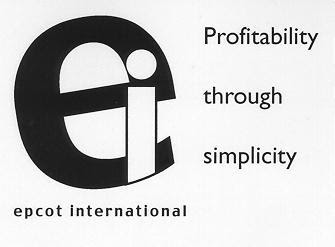Obviously the question shouldn’t be asked because the answer is clear at least to me. Manufacturers of the active ingredients and their formulators, who would be or are producing quality products with the least bit of in-process testing, should be the drivers. Done right the first time, I would call that QED (quod erat demonstrandum) from my high school geometry days. QED in geometry happens only when we understand and apply fundamentals to solve a problem.
QbD in manufacturing would be equal to approaching geometry’s QED if everyone would apply science, engineering and business basics to create the best processes. If we do not apply basics to design and manage a process, we will not have command and it will produce quality product but only after repeated analysis and/or aggravation (my connotation for “A”), an expensive proposition. In addition, repeated sampling and analysis also can become an opportunity to doctor the test results, potential 483 citations. We can placate ourselves by imagining that we are applying the fundamentals but repeated product analysis clearly suggests shortcomings.
Unfortunately, in pharmaceuticals, some would disagree with my conjecture. Why do I say that? US FDA and others few years ago acknowledged QbA (quality by analysis) “aggravation” is currently the most used method to produce quality products and suggested guidelines to cajole the pharmaceutical manufacturing to incorporate the best manufacturing technologies, alleviate QbA syndrome and move to QbD (QED practices). Noble gesture and that would have benefited companies and humanity at large, but it has not happened.
If QbD had become part of the manufacturing routine from inception, landscape would have been different. Everyone would have been presenting case studies of accomplishments at conferences and we would not be discussing PAT, QbD or QbA. Continued discussion about these three acronyms at conferences and in print suggests that what the regulatory bodies were expecting has not happened.
What has me mesmerized is that in every manufacturing and even in service businesses using the best practices and processes to deliver highest quality deliverable is the norm. However, pharma is still stuck in “QbA” mode. Companies practicing QbD have and will benefit.
Had QbD become part of every API manufacture and their formulations, in my book, the resulting manufacturing practices would have lowered costs, improved profits and reduced quality issues. We scientists and engineers take pride in our accomplishments and would be blowing our horns at the highest pitch. Noise would have been deafening. Did we fail or our work environment is/was not conducive to practice what we are taught? Do we need self-reflection?
One of my friends in the consulting business suggested reviewing few recent articles related to pharma regulations and innovations. General discussion theme of these articles was innovation in drug discoveries, R&D, impact of price controls in Europe and regulations. Inefficiencies in drug discovery (R&D) were acknowledged but no solutions were suggested. Development and practice of the best manufacturing practices for the manufacture of APIs and their formulations was not part of the discussion.
Is manufacturing such a challenge that we are afraid to tackle or talk about the issues or we don't want to talk about them as they will reflect our shortcomings? I don't believe so. Chemists and chemical engineers have shown through example what all is possible. We have met the toughest challenges.
Only reason and rationale I can imply for living with “quality by aggravation” is that the work culture in a pharmaceutical organization is not conducive to incorporate the best practices. Why? Is it because companies are in a hurry to get the product to the market and the general belief is that once the product has been commercialized we cannot change the process? If this is the general consensus, then we are mistaken. There may be others reasons that I am not familiar with.
FDA’s clause 21CFR314.70 does permit the process of continuous improvement after the process is commercial. However, companies improving their processes have to assure that the product performance has not changed. Reading the regulation one can see that FDA has created significant red tape and hurdles for the companies to embark continuous improvements.
All said and done companies still have to take the lead (be the driver) to commercialize the best processes and practice continuous improvement. FDA and other regulatory bodies have to take out the hurdles that come in the way for the companies to practice fundamentals of chemistry and engineering to produce quality products i.e. eliminate quality by aggravation.
Until companies take the lead and regulatory bodies facilitate the process, we will be talking QbA in 2025 or even later. Companies have to be held responsible for quality. Penalties for distribution of less than approved quality products have to be severe. Laws might have to be changed so that companies do not hide behind the legal system. Till the regulated take the lead the regulators will drive their life.
I re-emphasize that companies create the manufacturing processes and should be the driver/owner to deliver the best product. If they don't, regulators will muddle and best quality will not be produced at optimum cost.
Girish Malhotra, PE
EPCOT International
